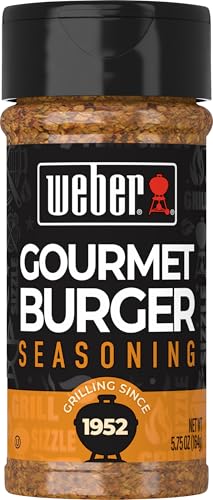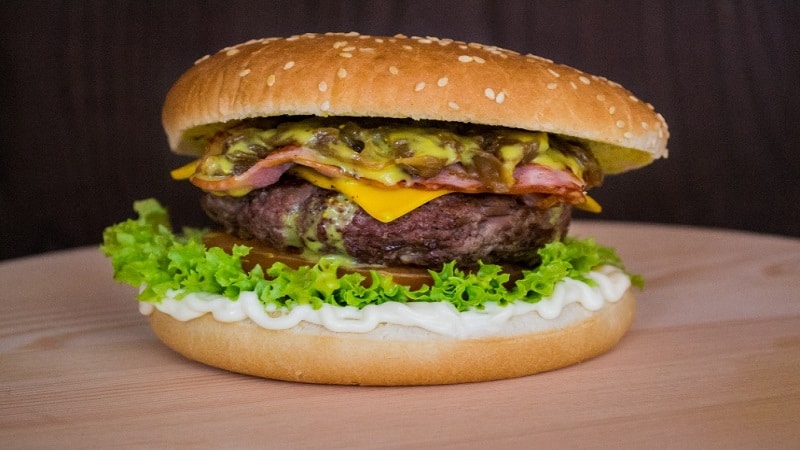Key Takeaways
- Historical Origins: The roots of modern burgers trace back to medieval Europe, where ground meats combined with spices and herbs formed the earliest patties.
- Culinary Creativity: Regional variations and trade routes contributed to diverse flavor profiles, with influences from England’s spiced beef to the Mediterranean’s lamb patties.
- Cooking Techniques: Charcoal grilling and roasting methods enhanced the flavors of medieval patties, creating a smoked depth that modern cooks still appreciate today.
- Innovative Pairings: Traditional accompaniments like fresh herbs, pickled vegetables, and seasonal fruits laid the groundwork for modern burger toppings and sides.
- Evolution of Patties: The transformation of burger patties over centuries reflects cultural exchanges and innovations, enriching today’s diverse burger options.
- Modern Twist on Tradition: Contemporary interpretations benefit from historical techniques and flavors, allowing modern cooks to experiment and create unique burger profiles.
When I think of a juicy burger, my mind instantly drifts to summer barbecues and sizzling patties. But what if I told you that the origins of this beloved dish stretch back to medieval times? That’s right! The ancestors of our modern burgers were crafted in kitchens long before fast food chains made them a staple of our diets.
Exploring the culinary history of medieval patties reveals a fascinating blend of flavors and ingredients. From spiced meats to unique herbs, these early versions of burgers tell a story of innovation and necessity. Join me as we dive into the savory world of medieval burger ancestors and discover how they laid the groundwork for the delicious patties we enjoy today.
Overview of Medieval Burger Ancestors
Exploring the origins of burgers reveals a fascinating culinary journey from medieval times. Early meats, spices, and cooking methods set the stage for what we now enjoy as burgers.
Historical Context
In medieval Europe, creating meals focused on preserving and flavoring. Ground meats combined with herbs and spices formed the basis of early patties. Trade routes introduced new flavors, allowing cooks to experiment. Charcoal grilling and roasting brought rich, smoky flavors that enhanced the taste of these early burger ancestors. Different regions showcased unique styles, from spiced beef in England to lamb patties in the Mediterranean.
Ingredients and Preparation
Ingredients varied widely based on location and available resources. Cooks often used meats like beef, lamb, or pork. Mixing in spices such as pepper, cumin, or coriander brought a symphony of flavors. Preparation techniques included grinding meats and molding them into patties, which were then grilled or baked. Presentation mattered; medieval diners often garnished their dishes with herbs or fruits. The combination of vibrant flavors and textures laid the groundwork for today’s diverse burger landscape.
Regional Variations of Patties
Exploring the regional variations of medieval patties reveals a treasure trove of flavors and styles that paved the way for today’s burger creations.
European Influences
In Europe, especially England, spiced beef became a favored choice for patties. The use of fresh herbs and spices like thyme, rosemary, and nutmeg transformed simple beef into satisfying meals. Cooks often mixed ground meats with breadcrumbs and egg to bind the mixture, creating a hearty consistency that grilled beautifully. A combination of regional cheeses and tart fruits complemented these savory patties, enhancing their flavors. My love for crafting burgers often pulls inspiration from these historical approaches, like using a robust cheddar or tangy apple chutney as a topping.
Middle Eastern Contributions
Middle Eastern cultures also left a significant imprint on early patty-making, especially with dishes like kebabs and kofta. Ground lamb or beef spiced with cumin, coriander, and garlic formed fragrant, tender patties that grilled to perfection. The incorporation of fresh parsley or mint added a brightness that appealed to many palates. I enjoy experimenting with these flavors in my burgers, creating a delightful twist by adding tahini or a yogurt-based sauce for that added creaminess and depth. This fusion not only pays homage to the past but brings the world of medieval taste right into my kitchen.
Cooking Techniques and Serving Styles
Diving into medieval cooking techniques and serving styles offers a unique perspective on how we create and enjoy burgers today. Exploring these methods reveals a treasure trove of flavors and combinations that inspire modern burger creation.
Grilling and Roasting Methods
Grilling and roasting played crucial roles in the preparation of medieval patties. Charcoal grilling added smoky depth and intensified flavors, much like the modern methods I love to use today. Roasting over an open flame not only cooked the meat to perfection but also developed those crispy, caramelized edges that elevate a burger experience.
These cooking techniques often involved careful monitoring to achieve optimal results, ensuring that the patties remained juicy inside while achieving that satisfying exterior char. I recommend trying variations of these methods with contemporary meats and seasonings. Swapping traditional beef for spiced lamb or blending in unexpected herbs can amplify flavor profiles and transport you back to those medieval kitchens.
Accompaniments and Sides
The medieval approach to accompaniments and sides lays the groundwork for the creative pairings I enjoy with my burgers. In those times, cooks often garnished patties with fresh herbs, seasonal fruits, or even spiced sauces. Ingredients like pickled vegetables, tart fruits, or zesty relishes added a delightful contrast to the rich flavors of the meat, much like how I incorporate bright toppings and condiments today.
For sides, think beyond the classic fries. Roasted root vegetables or herbed grains can complement a burger beautifully. I love experimenting with spicy slaws or creamy dips that honor those historical inspirations while adding a modern twist. Creatively blending flavors and textures can elevate the dining experience and bring a touch of medieval culinary excitement to your next burger night.
The Evolution of Burger Patties
I love diving into the history of burger patties. Understanding their evolution makes experimenting with flavors even more exciting. Early patties from medieval times laid the groundwork for the diverse creations we enjoy today.
Transformation Through the Ages
Medieval burgers transformed over centuries, thanks to cultural exchanges and culinary innovations. Cooks combined spices like pepper and cumin with available meats, creating unique flavor profiles. Trade routes introduced new ingredients, inspiring creativity. In England, the love for spiced beef turned into a tradition, while the Mediterranean favored lamb. The transformation was influenced not just by geography but also by cooking methods. Roasting over open flames enhanced flavors and gave meats a delightful smokiness. Each generation of cooks left a mark, ensuring that what started as simple meat patties became the delicious varieties we cherish today.
Modern Interpretations
Modern interpretations of these historical patties continue to fascinate me. I enjoy blending traditional techniques with contemporary ingredients. Imagine a spiced beef patty infused with fresh herbs like rosemary and topped with artisanal cheeses. Incorporating unexpected elements, like a tangy chimichurri or pickled seasonal veggies, brings a modern twist to classic flavors. I often experiment by mixing different meats or adding unique spices, such as smoked paprika or Sriracha, to rekindle that medieval spirit while delivering a fresh experience. The diversity of toppings is immense; from tangy barbecue sauce to exotic fruits, it all contributes to the evolution of the burger. Each creation tells a story that connects past culinary traditions with my own passion for burgers.
Conclusion
Exploring the medieval origins of burgers has been a delicious journey. It’s fascinating to see how these early patties laid the groundwork for the mouthwatering creations we enjoy today. The blend of spices and techniques from that era not only enriched the flavors but also inspired countless variations.
I hope you feel inspired to experiment in your own kitchen. Whether it’s trying out a spiced lamb patty or adding fresh herbs to your next burger night, there’s so much fun to be had. Let’s keep the spirit of those medieval cooks alive by blending tradition with our modern tastes. Happy cooking!









